Southern Laos - Pakse, Vat Phou, and Bolaven Plateau
"The traveler sees what he sees. The tourist sees what he has come to see." G.K. Chesterton
5/1/20247 min read
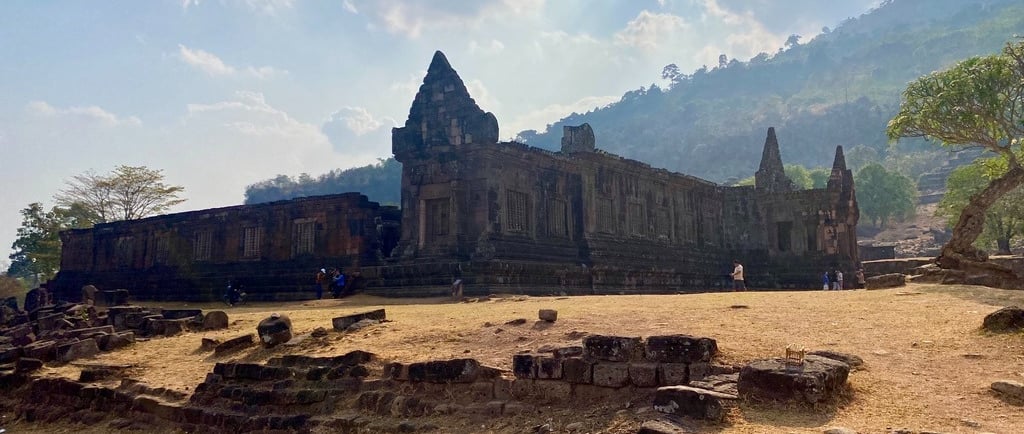

As we neared the end of our journey through Laos, we flew into Pakse in the southern region. (Fun Fact: On our flight to and from Pakse, we sat directly behind Mr. Sonexay Siphandone, the Laos Prime Minister.)
Once in Pakse, we were driven for about 45 minutes to our boutique hotel accommodations at The River Resort (https://www.booking.com/Share-y6a9OIy). This hotel is nestled right along the Mekong River, and our room was perfectly situated to view the sunrise each morning. The resort was quite remote, so we ate each meal at the hotel, which has a very diverse menu. The pools, two to choose from, were quiet and a nice way to cool off from the unforgiving Laotian heat. Most people only opt for a few days in this area; however, we stayed for four nights.
Vat Phou is a site of the Khmer Empire ruins. Unlike Angkor Wat, it isn't as well-known or as big, but it does encompass the same architectural style and offers a glimpse of the reach this empire had. We took a tuk-tuk from our hotel to the site, which is a great way to really see up close the daily life of the Laotian people. Although the site is still under renovations, it represents a clear view of the carved rock facades, the water system, and the building style this empire is known for. If you have been to Angkor Wat, this area in Laos may not be as impressive, but if you are in the area, it is worth a visit.
We also ventured off to the Bolaven Plateau on a day tour arranged by the hotel. (The hotel offers three different excursions, all priced at $110-$130 US for a private van and driver.) Our tour was a full day and included a boat ride across the river, where we met our driver and were whisked away to waterfalls, coffee plantations, local villages, and an agro farm. Tad Fane Waterfall was our first stop. This waterfall is massive, and you can hike to the bottom if you choose; however, the claim to fame for this site is a zip line (about $30) that goes from one side of the valley to the other and back. Although we didn’t choose to ride the zip line, we were happy to be bystanders of other brave tourists. The property also features a restaurant, a coffee shop, market stalls, and even rooms for rent.
After getting back in the van, we were taken to a small agro farm and shown around. Here, you can purchase local coffee, pastries, teas, chocolate, and more. We felt this stop could have been eliminated from the itinerary. Not far from this was our second waterfall, Tad Yuang. This place was more vibrant, with tourists and locals alike. Food is for sale, as well as access to changing facilities for those wanting to swim; a short hike from the top takes you down to the bottom of this waterfall, a popular swimming spot.
We captured some drone footage here, but since we weren’t ready for a swim, we embarked on a longer trip to our next destination. We rode for about an hour before we stopped at a picturesque coffee plantation for lunch. This seemed to be a popular spot for tourists, but it was lovely, and the food was good. Next, we visited a local village and one last waterfall, Tad Lo. This last waterfall was a favorite with the locals and was PACKED with young Laotians, lively music, and BeerLao. It was a massive area for swimming and recreation. We ended our tour with a long drive back to the river where we caught our boat ride to the hotel. It was well worth the money for the amount we got to see, and although we didn’t hire a guide, our driver spoke English well enough to explain and answer any questions we had. Lunch and entrance fees to the waterfalls and villages were not included in the price, so make sure to have some cash or ask the driver to stop at an ATM.


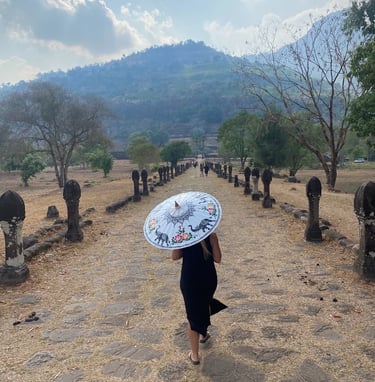


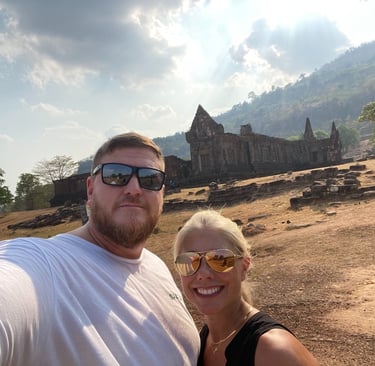
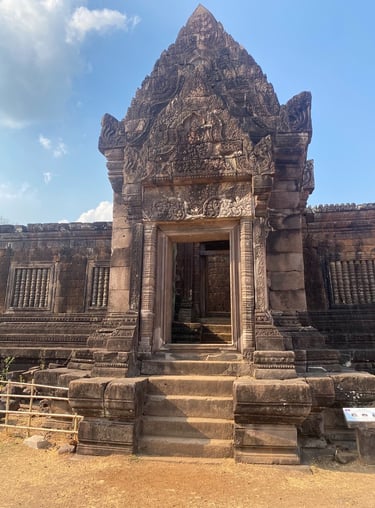

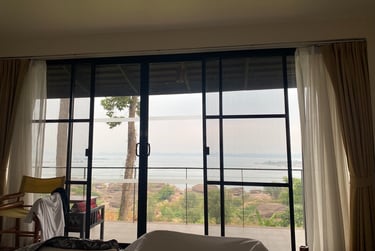

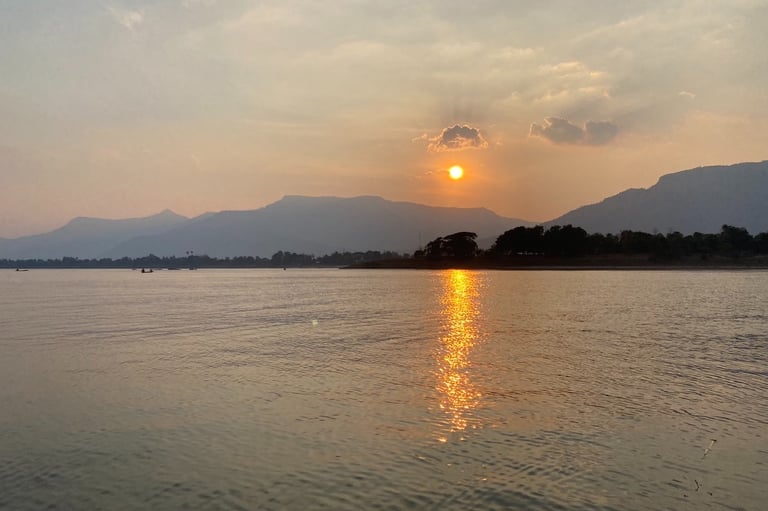

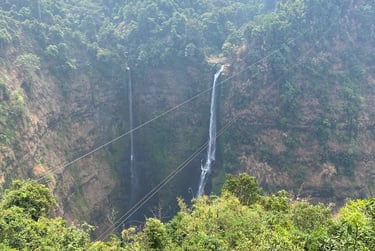

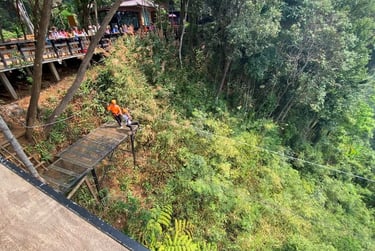

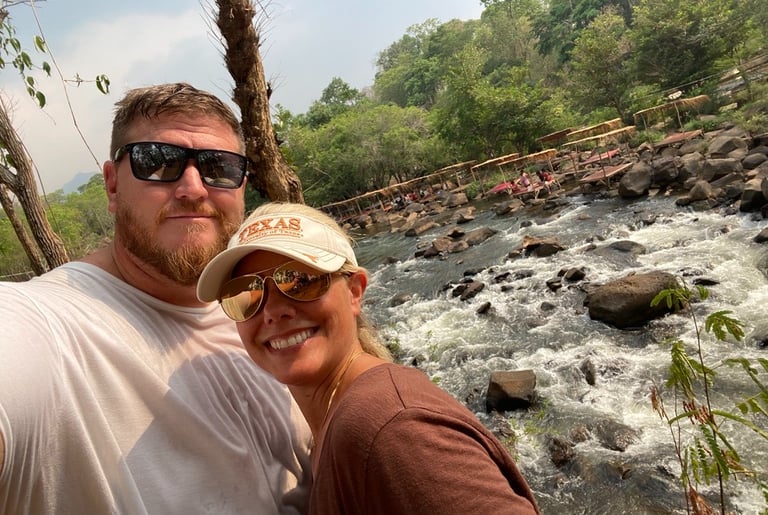

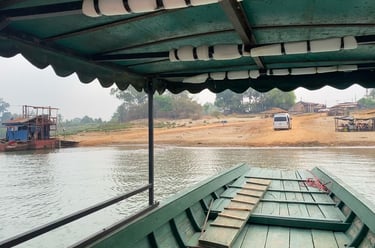

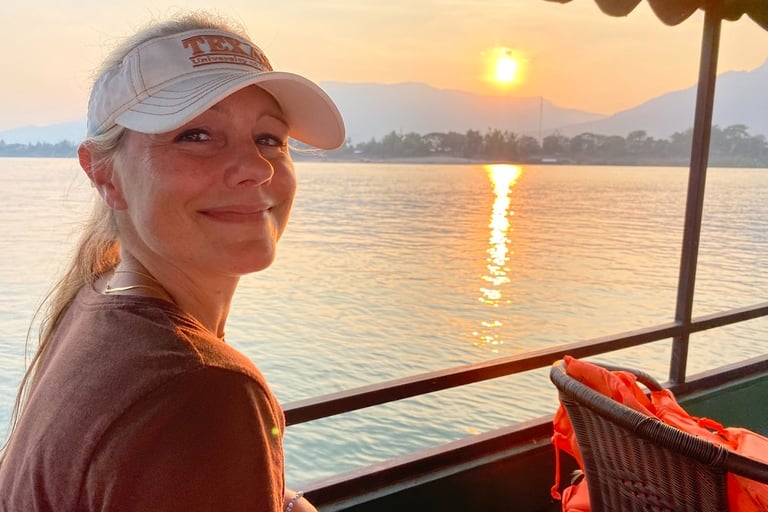

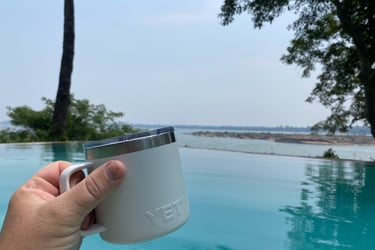



As we neared the end of our journey through Laos, we flew into Pakse in the southern region. (Fun Fact: On our flight to and from Pakse, we sat directly behind Mr. Sonexay Siphandone, the Laos Prime Minister.)
Once in Pakse, we were driven for about 45 minutes to our boutique hotel accommodations at The River Resort (https://www.booking.com/Share-y6a9OIy). This hotel is nestled right along the Mekong River, and our room was perfectly situated to view the sunrise each morning. The resort was quite remote, so we ate each meal at the hotel, which has a very diverse menu. The pools, two to choose from, were quiet and a nice way to cool off from the unforgiving Laotian heat. Most people only opt for a few days in this area; however, we stayed for four nights.
Vat Phou is a site of the Khmer Empire ruins. Unlike Angkor Wat, it isn't as well-known or as big, but it does encompass the same architectural style and offers a glimpse of the reach this empire had. We took a tuk-tuk from our hotel to the site, which is a great way to really see up close the daily life of the Laotian people. Although the site is still under renovations, it represents a clear view of the carved rock facades, the water system, and the building style this empire is known for. If you have been to Angkor Wat, this area in Laos may not be as impressive, but if you are in the area, it is worth a visit.
We also ventured off to the Bolaven Plateau on a day tour arranged by the hotel. (The hotel offers three different excursions, all priced at $110-$130 US for a private van and driver.) Our tour was a full day and included a boat ride across the river, where we met our driver and were whisked away to waterfalls, coffee plantations, local villages, and an agro farm. Tad Fane Waterfall was our first stop. This waterfall is massive, and you can hike to the bottom if you choose; however, the claim to fame for this site is a zip line (about $30) that goes from one side of the valley to the other and back. Although we didn’t choose to ride the zip line, we were happy to be bystanders of other brave tourists. The property also features a restaurant, a coffee shop, market stalls, and even rooms for rent.
After getting back in the van, we were taken to a small agro farm and shown around. Here, you can purchase local coffee, pastries, teas, chocolate, and more. We felt this stop could have been eliminated from the itinerary. Not far from this was our second waterfall, Tad Yuang. This place was more vibrant, with tourists and locals alike. Food is for sale, as well as access to changing facilities for those wanting to swim; a short hike from the top takes you down to the bottom of this waterfall, a popular swimming spot.
We captured some drone footage here, but since we weren’t ready for a swim, we embarked on a longer trip to our next destination. We rode for about an hour before we stopped at a picturesque coffee plantation for lunch. This seemed to be a popular spot for tourists, but it was lovely, and the food was good. Next, we visited a local village and one last waterfall, Tad Lo. This last waterfall was a favorite with the locals and was PACKED with young Laotians, lively music, and BeerLao. It was a massive area for swimming and recreation. We ended our tour with a long drive back to the river where we caught our boat ride to the hotel. It was well worth the money for the amount we got to see, and although we didn’t hire a guide, our driver spoke English well enough to explain and answer any questions we had. Lunch and entrance fees to the waterfalls and villages were not included in the price, so make sure to have some cash or ask the driver to stop at an ATM.
























